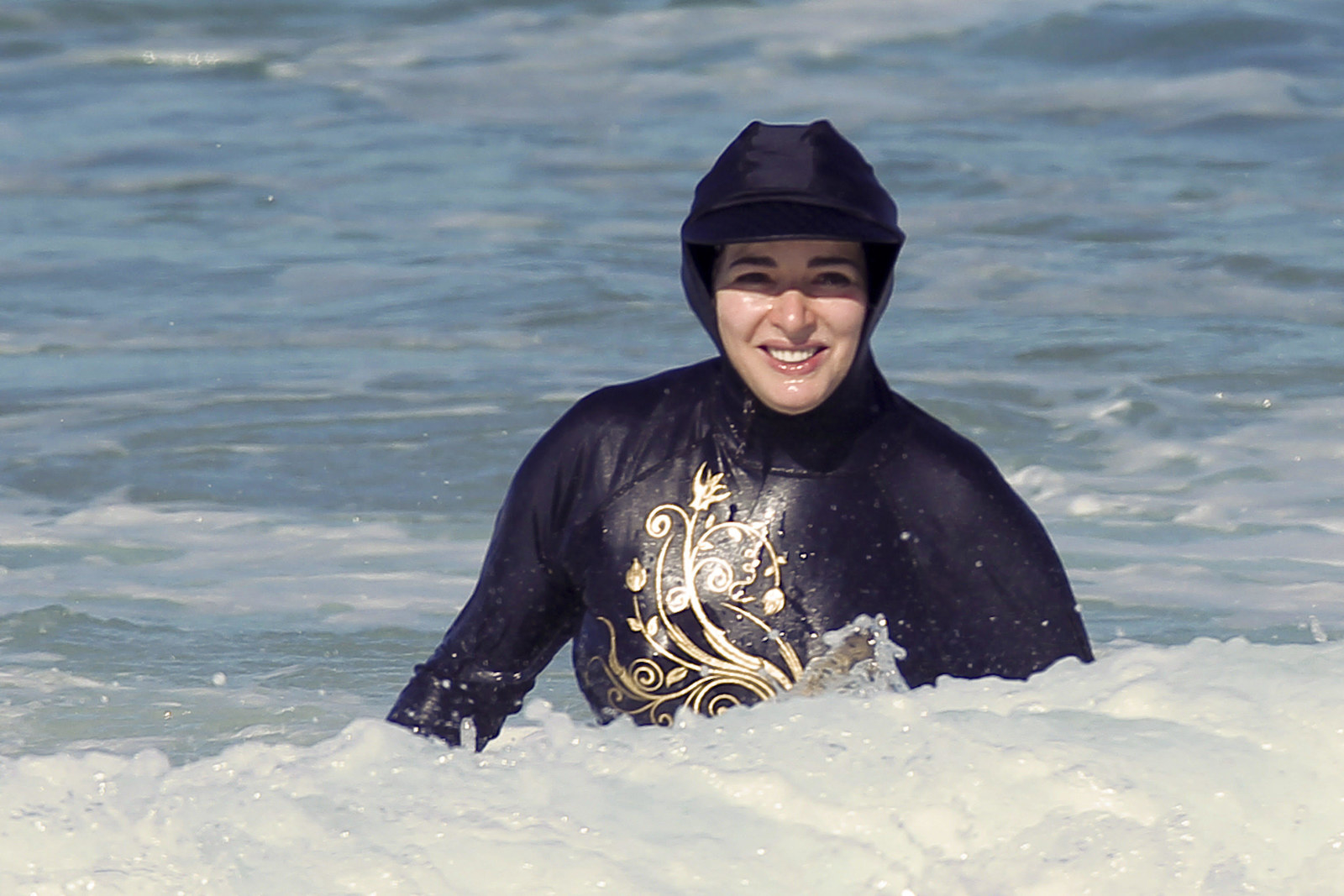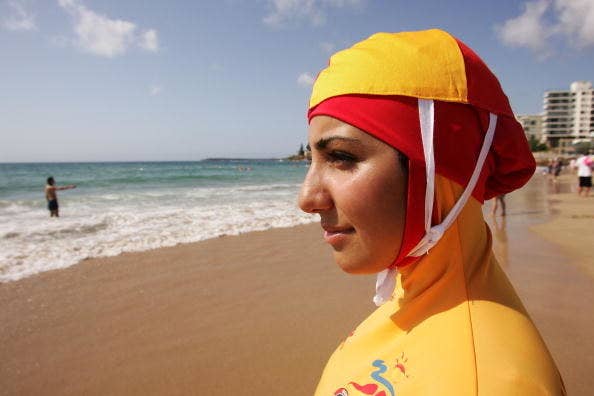
When Aheda Zanetti was growing up in Australia, she found the Muslim women around her were missing out in taking part in communal sporting activities, mainly because they were unable to find sportswear that fit with their religious belief in dressing modestly.
"I remember growing up in Australia posed a lot of challenges for a young Muslim / Arab girl," Zanetti writes on her website. "As years went by, I noticed there are younger girls and women that are embracing Islam and obeying their Islamic belief in dressing modestly, in turn, having to miss out on opportunities, and taking part in any sporting activities that Australia has to offer."
After watching her niece playing netball in a traditional hijab, she was inspired to begin searching for sporting garments suitable for Muslim women that would be comfortable and flexible at the same time.
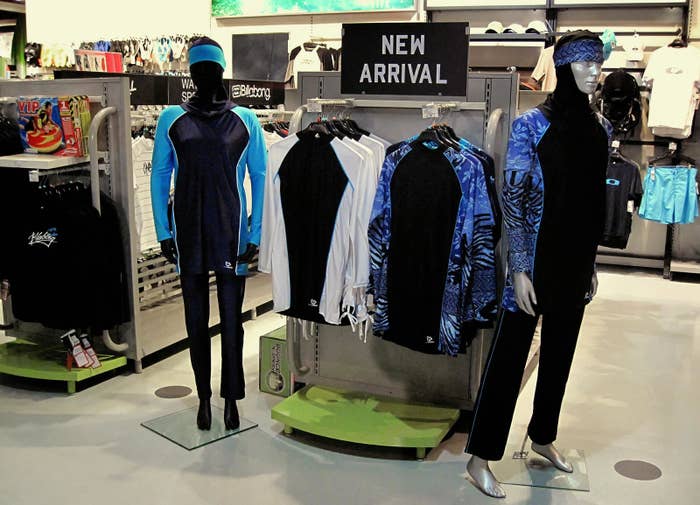
And so the burkini was born: a two-piece bathing suit that covered the head and body. Zanetti set up her company Ahiida in 2003, designing and producing specialised sportswear for Muslim women, and coined the term "burkini", which she registered as her trademark.
"Burkini" was named the Macquarie Dictionary Word of the Year in 2011, and Zanetti's story has been adapted into a play, The Modest Aussie Cozzie, by award-winning writer Alana Valentine.

Now modest swimwear is back in the headlines after the mayors of three French cities banned the item of clothing on beaches.
BuzzFeed News asked Muslim woman how they feel about the burkini, what they wear to the beach, and the evolution of modest swimwear.
"I took the plunge"
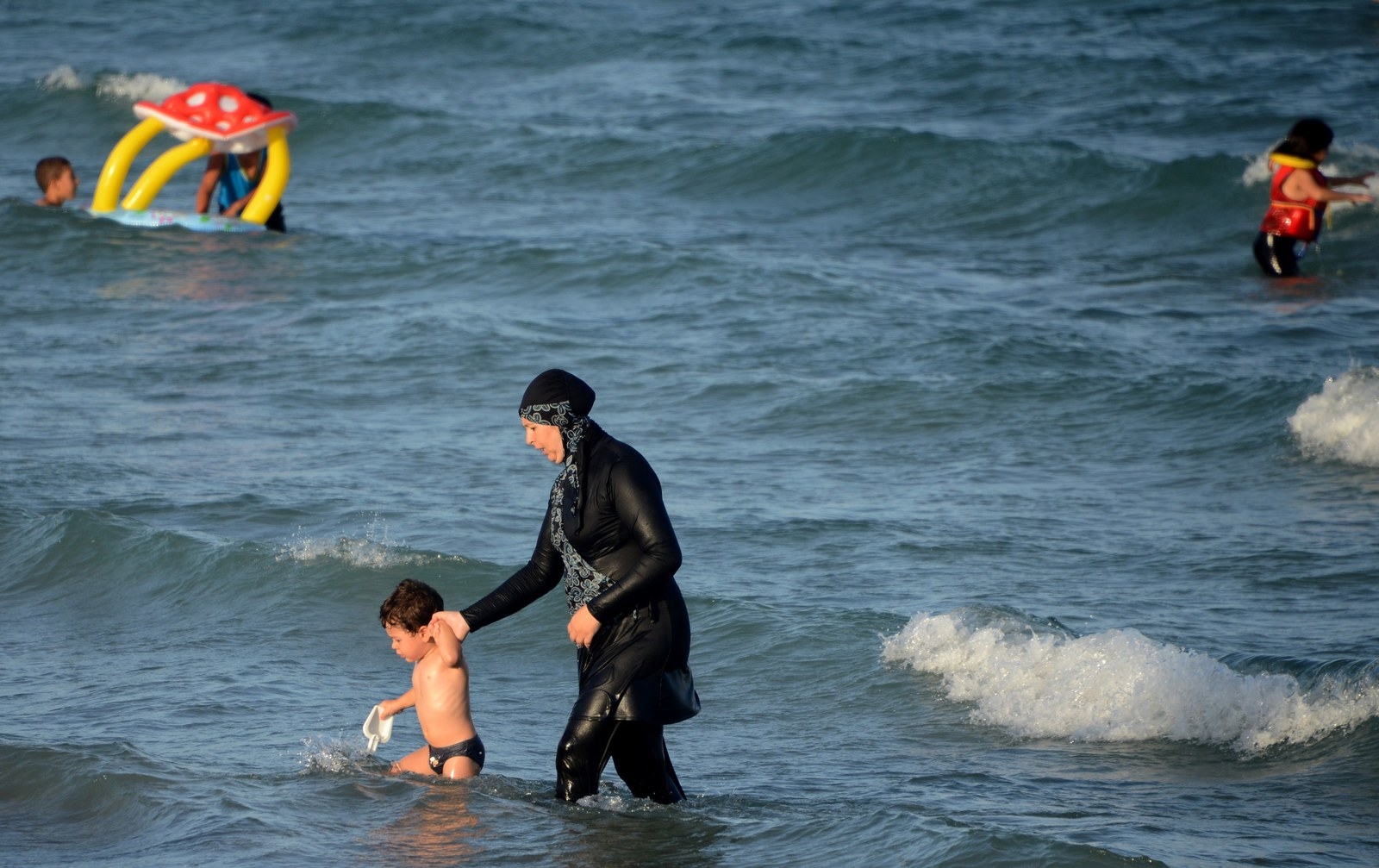
"I was rather reluctant to get [a burkini] for many years because I wasn't sure whether it would tick my ideals of modest beachwear," said Shelina Janmohamed, who writes on visual identity and is the author of the upcoming book Generation M. "But I went on holiday with my two little girls – it was a beach holiday – and I wanted to make the most of it. I've been on a beach before, I've gone swimming, but I wanted to play with them, and I wanted to enjoy that experience.
"So I took the plunge and I loved it. I loved every minute of it. I felt I could be who I was but also take advantage of the situation."
Janmohamed said mainstream sports brands already sell full-body swimwear and that designs of modest swimwear vary: Some include a minidress over the swimsuit, hoods can be integrated or separate, and there are both skintight and more loose-fitting suits. Three-quarter-length ones are also available. "This means the same parameters of modesty can be upheld in the swimwear as ordinary wear," she said.
"Instead of thinking Isn't it great Muslim women are becoming more active? and therefore encouraging their families, we're trying to stop them from going out and being sporty," she said.
"It's a practical solution and it's popular"
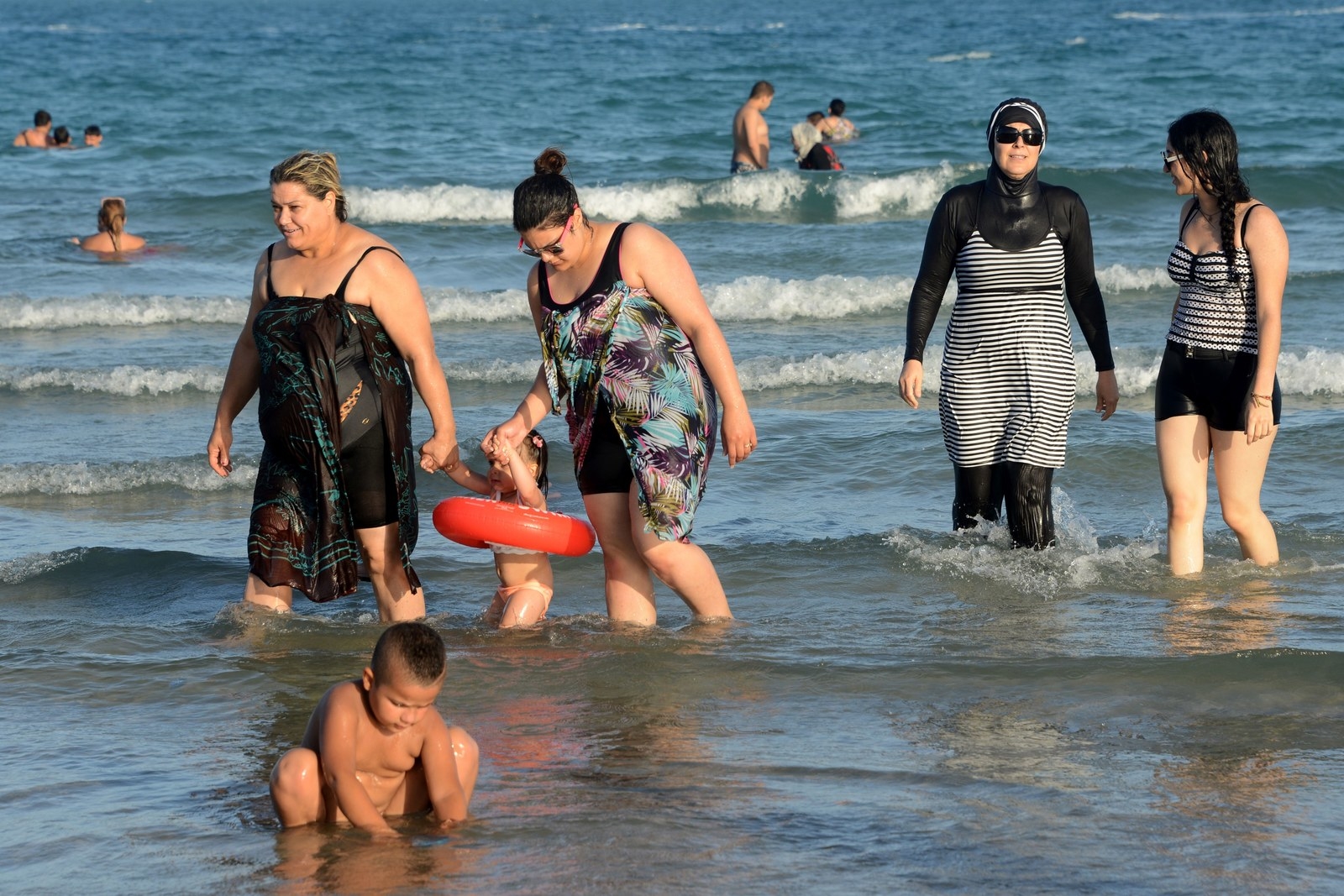
Dr Khadijah Elshayyal, a research fellow at Edinburgh University who is studying Muslims in Britain, said the growth in options of modest swimwear has enabled more Muslim women to be active, especially if they are unable to find a segregated pool or somewhere more secluded. "It's a form of integration and letting them access public spaces on their own terms," she said.
"People used to wear a long dress with trousers underneath, or sportswear light enough not to drag them [down], so the growth of modest swimwear is a practical solution and it's popular. I remember when it first came out and people thought it was quirky. They had never seen it before. But now I have friends who pack it with them when they go on holiday.
"You can't tell me anyone is forced to wear a burkini. It's a lifestyle choice." Most designers setting up modestwear lines are women, she added.
Makeshift hijab-friendly swimwear

Halima Khanom, 24, a schoolteacher, said that on her recent holidays she went snorkelling in the Red Sea and made her own "makeshift version" of modest swimwear consisting of leggings, shorts, and a waterproof top.
"It's really hard shopping for modest swimwear," Khanom said. "It's all online and expensive and takes a long time to arrive."
Anneka Shah, 23, a software developer, said she wears her "most summery, light, loose clothing" when she's at the beach. "I don't go to the beach to swim," she said. "Well, not in the UK."
For times when she does want to swim, such as when visiting a water park in Dubai, Shah said she has her "own makeshift modestwear" that's "not too dissimilar from a burkini. Leggings, shorts, and a long-sleeved top. I also have a separate waterproof hijab swim-hat thing."
The hijabi Instagrammers' take on modest swimwear
There are thousands of Instagram posts of women posting selfies of themselves and their squads donning burkinis and enjoying beach holidays, finessed with hashtags such as #Burkini, #HijabSwimsuit, and #Veilkini. It's quickly become apparent just how many fashion designers are catering to the market of young Muslims.
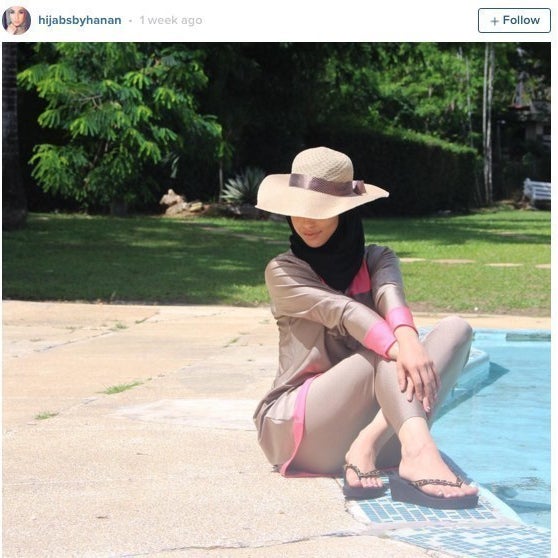
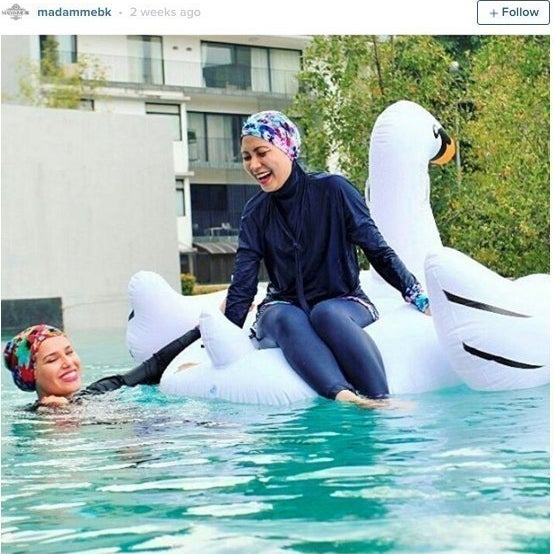
Muslim women vloggers, bloggers, and Instagram stars have been discussing modest swimwear and burkinis for a long time. They include Hanna MK, a French-based beauty blogger who reviewed a burkini in a YouTube video last year.
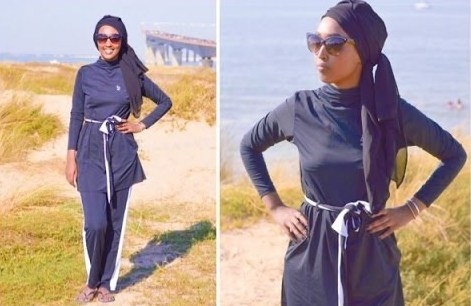
But many Muslim women have customised their own swimwear. Back in 2013, fashion and beauty vlogger Dina Torkia, who has 1 million followers on Instagram, published a video called "What I wear to the beach: the dreaded burkini edition" in which she wears cycling leggings and a long top.
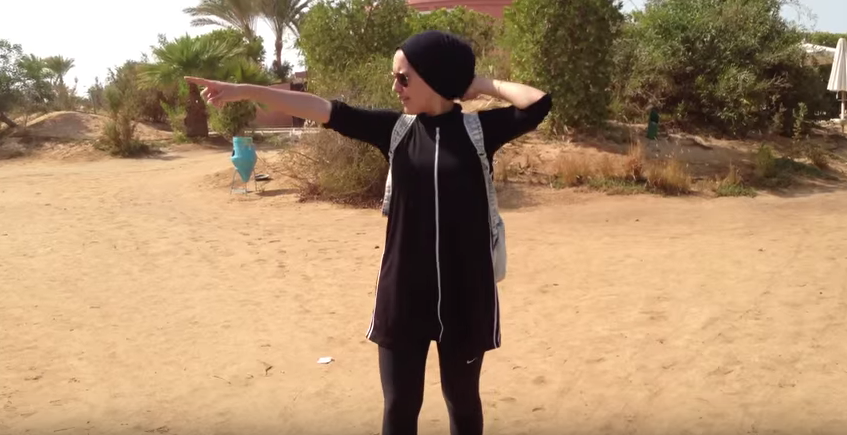
Noor Tagouri, the US news presenter, had this ensemble, which she shared on her Instagram:
Modest swimwear is not just worn by Muslim women
Zanetti has sold 700,000 garments since 2008, and told the Washington Post: "We've sold to Jews, Hindus, Christians, Mormons, women with various body issues. We've had men asking for them, too."
There are numerous modest swimwear brands also catering for orthodox Jewish women, such as Aqua Modesta, which markets itself as the "original kosher swimwear" company and has a line called the "skant", which looks like a skirt but is actually a pair of trousers.
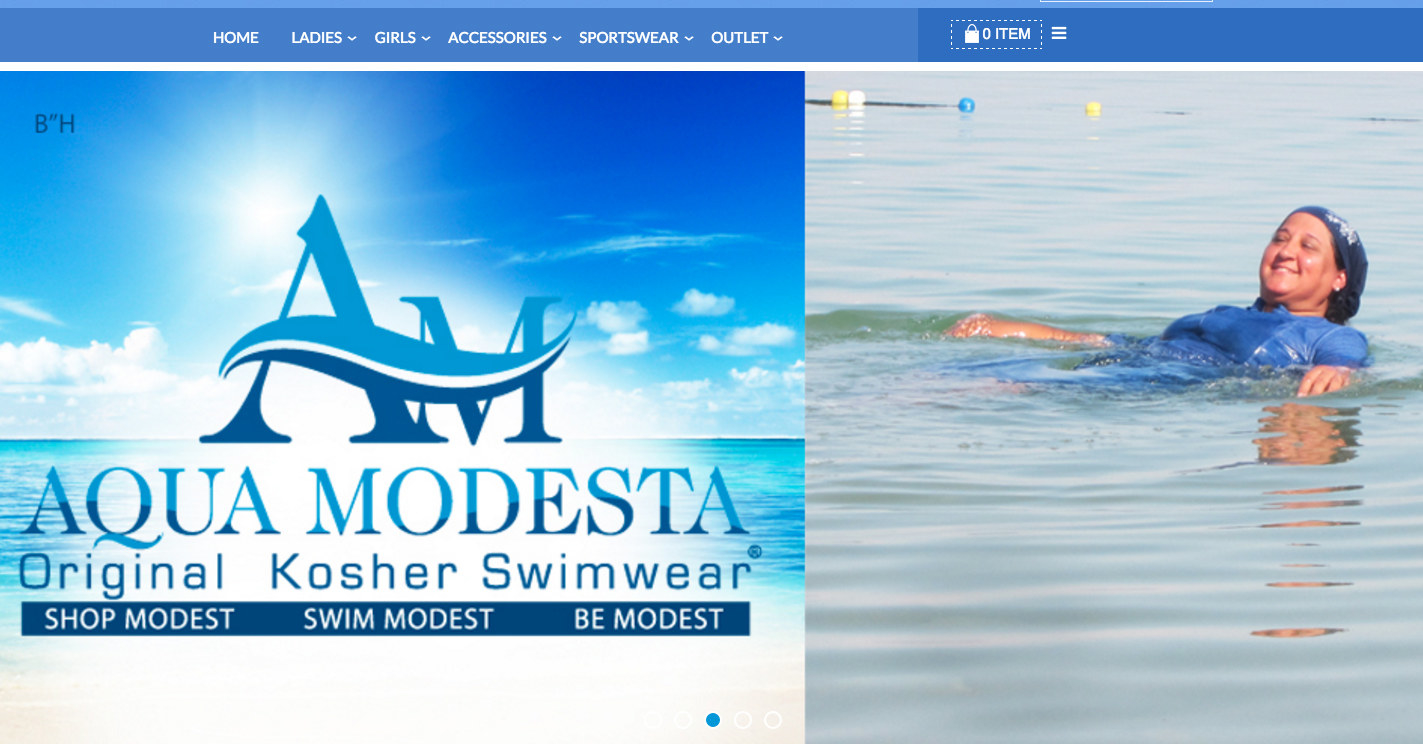
And celebrity chef Nigella Lawson made headlines in 2011 when she wore a three-piece garment from UK-based swimwear company Modestly Active while she swam in the sea at Bondi Beach, Sydney.
